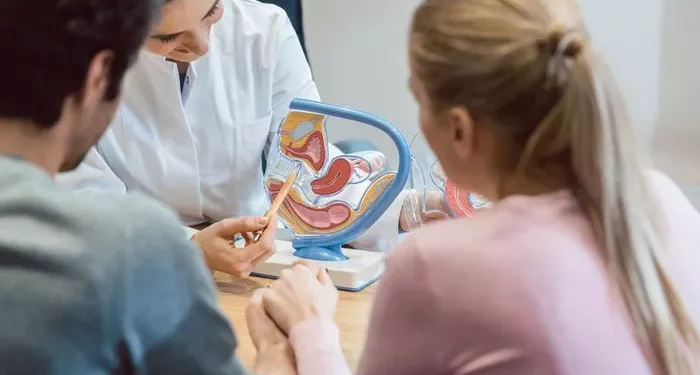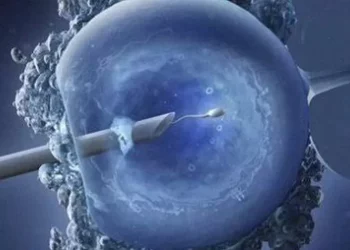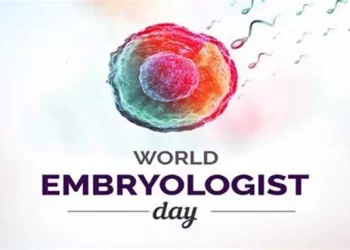Fallopian tube blockage is a significant cause of female infertility, accounting for about 25-30% of cases. The fallopian tubes are essential for natural conception as they serve as the conduit through which eggs travel from the ovaries to the uterus. Blockages can prevent this journey, leading to infertility. This article will explore the various causes of fallopian tube blockage in detail, using simple language to ensure clarity.
Anatomy of the Fallopian Tubes
The fallopian tubes, also known as uterine tubes, are narrow ducts that connect the ovaries to the uterus. Each woman typically has two fallopian tubes, one on each side of the uterus. The main functions of the fallopian tubes include:
Egg Transport: After ovulation, the fallopian tube captures the released egg and facilitates its movement towards the uterus.
Fertilization Site: Fertilization usually occurs in the ampulla, a widened part of the fallopian tube.
Transport of Sperm and Fertilized Egg: The tubes help sperm reach the egg and, if fertilization occurs, transport the fertilized egg (zygote) to the uterus for implantation.
Causes of Fallopian Tube Blockage
Several factors can cause fallopian tube blockage, which can be categorized into infections, structural abnormalities, and other medical conditions.
Pelvic Inflammatory Disease (PID)
Pelvic Inflammatory Disease (PID) is one of the most common causes of fallopian tube blockage. PID is an infection of the female reproductive organs, often caused by sexually transmitted infections (STIs) like chlamydia and gonorrhea.
Infection and Inflammation: The infection causes inflammation and scarring of the fallopian tubes.
Adhesions and Scarring: Scar tissue and adhesions can form inside or around the fallopian tubes, leading to partial or complete blockage.
Symptoms: Common symptoms include pelvic pain, fever, unusual vaginal discharge, and pain during intercourse or urination.
Endometriosis
Endometriosis is a condition where tissue similar to the lining of the uterus (endometrium) grows outside the uterus. This abnormal tissue can affect the fallopian tubes in several ways:
Tissue Growth: Endometrial tissue can grow on the fallopian tubes, causing blockages.
Inflammation and Adhesions: The condition often leads to inflammation, which can result in scar tissue and adhesions that block the tubes.
Symptoms: Symptoms include painful periods, pain during intercourse, chronic pelvic pain, and infertility.
Tubal Ligation Reversal
Tubal ligation is a surgical procedure used as a permanent form of contraception. It involves cutting, tying, or blocking the fallopian tubes to prevent pregnancy. In some cases, women who have had a tubal ligation may opt for a reversal procedure.
Surgical Blockage: Tubal ligation itself creates a blockage.
Reversal Complications: The reversal surgery can sometimes fail to restore tubal patency due to scar tissue formation.
Ectopic Pregnancy
An ectopic pregnancy occurs when a fertilized egg implants outside the uterus, most commonly in the fallopian tubes. This can cause significant damage to the tubes.
Tubal Damage: The growing embryo can cause the tube to rupture or scar.
Surgical Intervention: Treatment for ectopic pregnancy often involves surgery, which can lead to further scarring and blockage.
Symptoms: Severe abdominal pain, vaginal bleeding, and dizziness are common symptoms.
Congenital Abnormalities
Some women are born with congenital abnormalities of the fallopian tubes that can lead to blockages.
Structural Defects: These may include tubes that are absent, underdeveloped, or abnormally formed.
Associated Conditions: Congenital abnormalities can be associated with other reproductive system malformations.
Fibroids
Uterine fibroids are non-cancerous growths in or around the uterus that can affect the fallopian tubes.
Pressure and Displacement: Large fibroids can exert pressure on the fallopian tubes or displace them, leading to blockages.
Symptoms: Symptoms may include heavy menstrual bleeding, pelvic pain, and pressure symptoms affecting the bladder and rectum.
Adhesions from Previous Surgeries
Past abdominal or pelvic surgeries can lead to the formation of adhesions, which are bands of scar tissue that can cause blockages.
Surgical Scarring: Operations like appendectomy, cesarean section, or surgeries for ovarian cysts can cause adhesions.
Symptoms: Adhesions may cause pain, intestinal obstruction, and infertility.
Hydrosalpinx
Hydrosalpinx is a condition where a fallopian tube is blocked and filled with fluid.
Infection and Inflammation: Previous infections or PID can lead to hydrosalpinx.
Tubal Distension: The tube becomes swollen and distended, preventing egg and sperm from meeting.
Symptoms: Often asymptomatic but can cause infertility and sometimes pelvic pain.
Tuberculosis
Genital tuberculosis is a form of tuberculosis that affects the reproductive organs and can cause fallopian tube blockage.
Infection Spread: The bacteria causing tuberculosis can spread from the lungs to the reproductive organs.
Scarring and Blockage: Tuberculosis can cause severe scarring and tubal damage.
Symptoms: Symptoms include pelvic pain, irregular menstrual cycles, and infertility.
Inflammatory Conditions
Various inflammatory conditions can lead to fallopian tube blockages.
Peritonitis: Inflammation of the peritoneum (the lining of the abdominal cavity) can cause adhesions involving the fallopian tubes.
Appendicitis: Inflammation of the appendix can lead to infections that spread to the fallopian tubes, causing blockages.
Symptoms: Abdominal pain, fever, and signs of infection are common.
Cancer
Cancerous growths in the reproductive organs or surrounding areas can lead to fallopian tube blockages.
Primary Tubal Cancer: Although rare, cancer can originate in the fallopian tubes.
Secondary Spread: Cancer from nearby organs (like the ovaries or uterus) can invade the fallopian tubes.
Symptoms: Symptoms can include abnormal vaginal bleeding, pelvic pain, and signs of metastasis.
Iatrogenic Causes
Medical interventions or treatments can sometimes lead to fallopian tube blockages.
Radiation Therapy: Treatment for cancers in the pelvic area can damage the fallopian tubes.
Surgical Errors: Inadvertent damage during surgery can lead to scarring and blockage.
Symptoms: Depends on the underlying condition being treated.
Diagnosis of Fallopian Tube Blockage
Diagnosing fallopian tube blockage typically involves several steps and various diagnostic techniques.
Medical History and Physical Examination
A thorough medical history and physical examination are the first steps.
History: Information about previous infections, surgeries, menstrual cycles, and symptoms of pain or abnormal bleeding.
Physical Examination: Includes a pelvic exam to check for tenderness, masses, or other abnormalities.
Imaging Tests
Several imaging tests can help diagnose fallopian tube blockage.
Hysterosalpingography (HSG): A dye is injected into the uterus, and X-rays are taken to check if the dye travels through the fallopian tubes.
Ultrasound: Transvaginal ultrasound can provide images of the reproductive organs.
Sonohysterography: An ultrasound procedure where fluid is injected into the uterus to provide clearer images.
Laparoscopy
Laparoscopy is a minimally invasive surgical procedure used for diagnosis and treatment.
Direct Visualization: A camera is inserted through a small incision in the abdomen to visualize the fallopian tubes directly.
Treatment: Can also be used to treat blockages by removing adhesions or repairing damaged tubes.
Other Tests
Other tests may include:
Blood Tests: To check for infections or hormonal imbalances.
Endometrial Biopsy: To check for endometrial tissue in cases of suspected endometriosis.
See Also:Can Uterine Fibroids Cause Fallopian Tube Blockage?
Treatment of Fallopian Tube Blockage
The treatment of fallopian tube blockage depends on the cause and severity of the blockage.
Medications
Medications are often used to treat infections and inflammation.
Antibiotics: Used to treat PID or other infections causing the blockage.
Hormonal Treatments: May be used for endometriosis to reduce tissue growth and inflammation.
Surgical Treatments
Surgical intervention is often required for significant blockages.
Laparoscopic Surgery: Used to remove adhesions, treat endometriosis, or repair damaged tubes.
Tubal Reanastomosis: Surgery to reconnect the fallopian tubes after a tubal ligation.
Salpingectomy: Removal of a severely damaged or blocked tube, sometimes necessary in cases of hydrosalpinx.
Assisted Reproductive Technologies (ART)
When surgical treatments are not possible or successful, assisted reproductive technologies may be considered.
In Vitro Fertilization (IVF): Eggs are fertilized outside the body and then implanted into the uterus, bypassing the fallopian tubes entirely.
Prevention of Fallopian Tube Blockage
Preventing fallopian tube blockage involves several strategies to reduce the risk of infections and other causes.
Safe Sexual Practices
Practicing safe sex can significantly reduce the risk of STIs that cause PID.
Condom Use: Consistent use of condoms reduces the risk of STIs.
Regular Screening: Regular STI screenings and prompt treatment of any infections.
Timely Treatment of Infections
Prompt treatment of infections can prevent complications.
PID Treatment: Early treatment of PID can prevent the spread of infection to the fallopian tubes and reduce the risk of scarring and blockage.
Health Maintenance
Maintaining overall reproductive health can also help prevent fallopian tube blockage.
Regular Gynecological Check-ups: Routine visits to a gynecologist can help detect and treat any reproductive health issues early.
Healthy Lifestyle: Eating a balanced diet, exercising regularly, and avoiding smoking can promote reproductive health.
Minimizing Surgical Risks
For women considering surgical procedures that involve the reproductive organs, minimizing risks is crucial.
Choosing Experienced Surgeons: Opting for experienced surgeons reduces the risk of surgical errors that could lead to adhesions or damage to the fallopian tubes.
Understanding Risks: Discussing potential risks and complications with healthcare providers before surgery.
Education and Awareness
Educating oneself about reproductive health and being aware of the signs and symptoms of conditions that can lead to fallopian tube blockage is essential.
Symptom Awareness: Knowing the signs of pelvic infections, endometriosis, and other conditions can prompt early medical attention and treatment.
Family Planning: Considering the long-term implications of contraceptive choices, such as tubal ligation, and discussing options with healthcare providers.
Conclusion
Fallopian tube blockage is a significant cause of female infertility, impacting a woman’s ability to conceive naturally. Understanding the various causes, from infections like PID to structural abnormalities and other medical conditions, is crucial for both prevention and treatment. Advances in diagnostic techniques and treatments, including medications, surgical interventions, and assisted reproductive technologies, offer hope to many women facing this challenge. By promoting awareness, early detection, and prompt treatment of underlying conditions, healthcare providers can help women preserve their reproductive health and achieve their family planning goals effectively.
Continued research into the causes and treatments of fallopian tube blockage is essential to improve outcomes and quality of life for affected individuals. Through comprehensive healthcare strategies that encompass prevention, early intervention, and advanced medical treatments, the medical community can continue to support women in overcoming the challenges posed by fallopian tube blockage and infertility.
Understanding the complex interplay of factors contributing to fallopian tube blockage underscores the importance of multidisciplinary approaches in reproductive health care. By working collaboratively across specialties, healthcare providers can offer personalized treatment plans that address the unique needs and circumstances of each patient. With ongoing advancements in medical technology and research, the outlook for women affected by fallopian tube blockage continues to evolve, offering hope and opportunities for improved reproductive outcomes in the future.
Related Links:



























